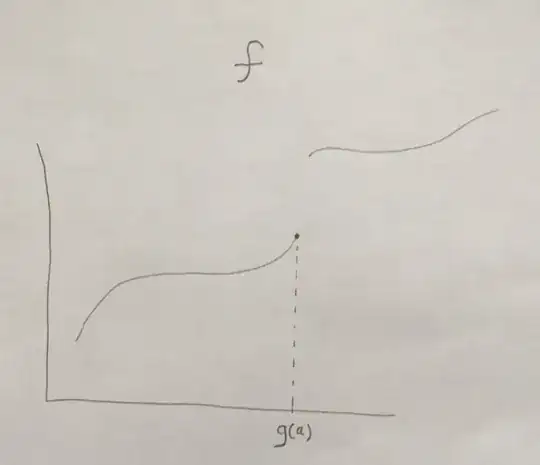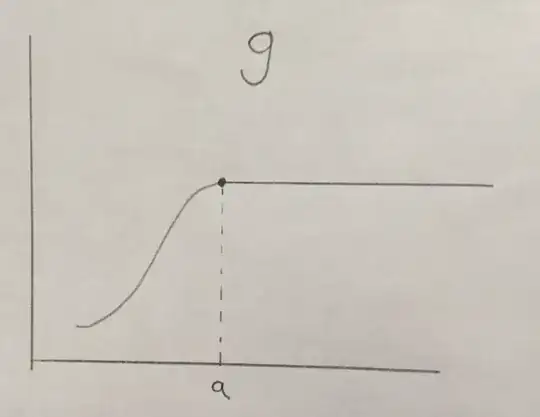I've been playing around with the limits of compositions...e.g. $\displaystyle \lim_{x \to a}(f \circ g) (x)$...and wanted to confirm my intuition that just because $\displaystyle \lim_{x \to a}(f \circ g) (x)=L$, it is not necessarily the case that $\displaystyle \lim_{x \to g(a)}f(x)=L$.
Said differently, if $\displaystyle \lim_{x \to a}(f \circ g) (x)=L$, then we cannot generally conclude that $\displaystyle \lim_{x \to g(a)}f(x)=L$.
The pictures (hand drawn, sorry) I had in mind are the following:
where the function $g$ maintains its value for all $x \geq a$.
The definition of $\displaystyle \lim_{x \to a}(f \circ g) (x)=L$, which is $\forall \epsilon \gt 0 \exists \delta \gt 0 \forall x \in \mathbb R \big [ 0 \lt \lvert x -a \rvert \lt \delta \rightarrow \lvert (f \circ g)(x) - L \rvert \lt \epsilon \big ] $ for $L = f(g(a))$, seems to be satisfied. From the graph of $f$, clearly $\displaystyle \lim_{x \to g(a)}f(x)\neq f(g(a))$.
Is this the correct intuition?

